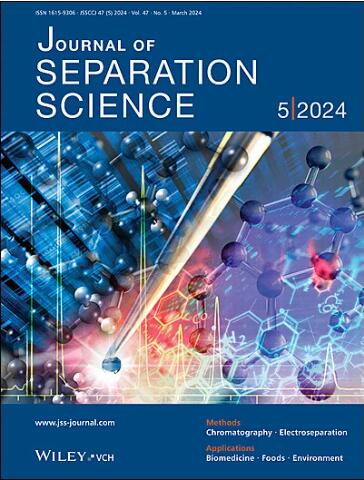Robust In Situ Growth of Epitaxially Oriented Titanium Dioxide Microplates on Titanium Fiber for Selective and Efficient Solid-Phase Microextraction of Polycyclic Aromatic Hydrocarbons From Water Samples Prior to HPLC-UV
Abstract
Well-defined TiO2 microplates (TiO2MPs) were directly achieved on a titanium fiber by the hydrothermal treatment in alkaline solution. The hydrothermal in situ growth of TiO2MPs greatly depended on the alkali concentration and hydrothermal temperature. The results proved the formation of epitaxially oriented TiO2MPs with rutile structure. The Ti@TiO2MPs fiber exhibited improved adsorption selectivity and enhanced adsorption capability for PAHs. After optimizing adsorption conditions, the developed method with Ti@TiO2MPs fiber presented good linearity of PAHs in the ranges of 0.05–200 ng/mL with LODs of 0.012–0.161 ng/mL and LOQs of 0.039–0.537 ng/mL. The intra-day and inter-day RSDs for the developed method with a single fiber were 2.59%–4.32% and 3.29%–6.31%, respectively. Moreover, RSDs were found to be 5.48%–8.35% for the developed method with five pieces of fibers fabricated in different batches. Finally, the developed method was applied to selective preconcentration and sensitive determination of target PAHs in environmental water samples. The relative recoveries of target PAHs in real water samples spiked at the concentrations of 5.0 and 10.0 ng/mL were in the ranges of 87.20%–110.6% with RSDs lower than 7.16%. Furthermore, the Ti@TiO2MPs fiber was highly stable without loss of adsorption efficiency after 200 adsorption and desorption cycles.

 求助内容:
求助内容: 应助结果提醒方式:
应助结果提醒方式:


